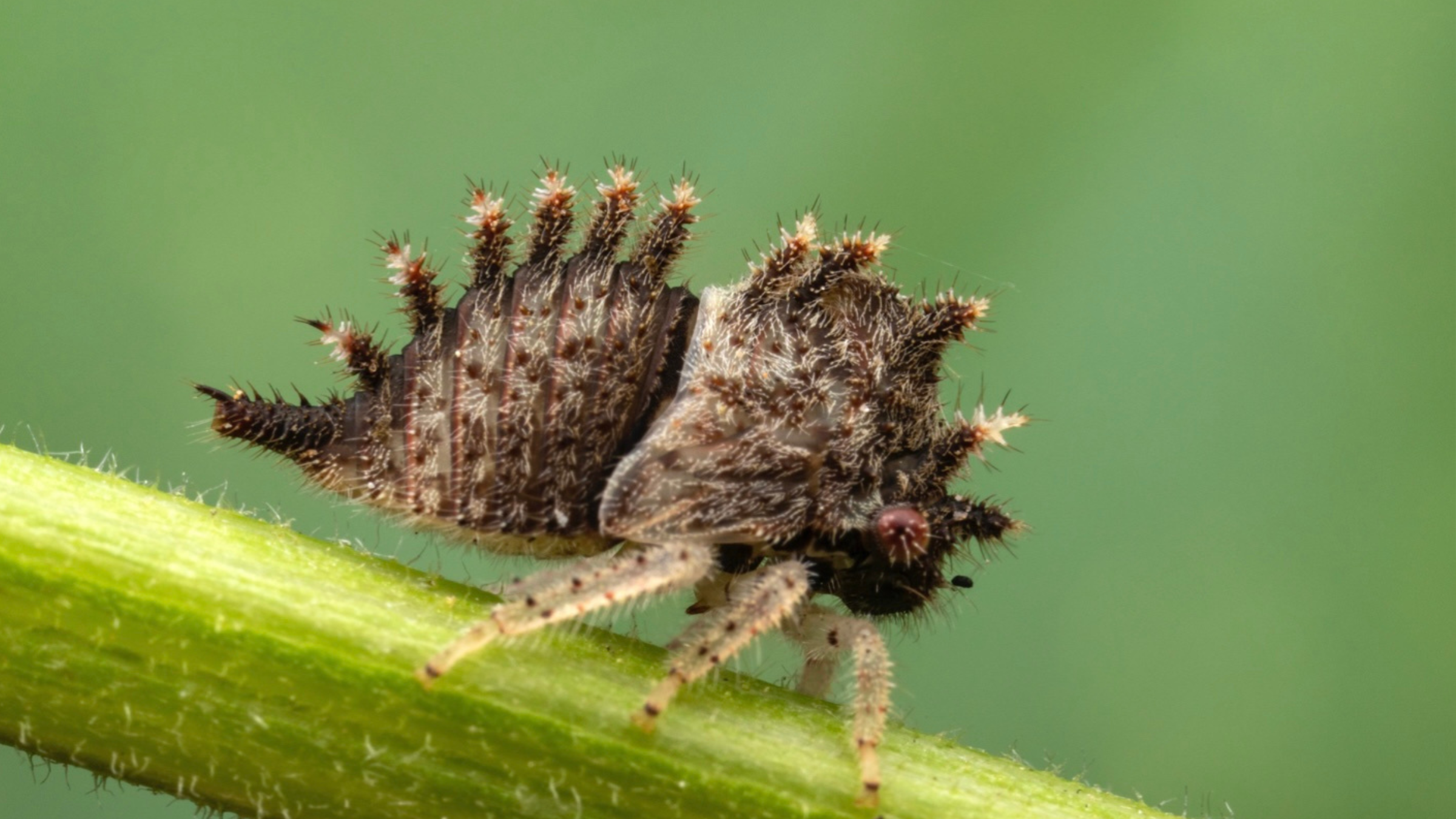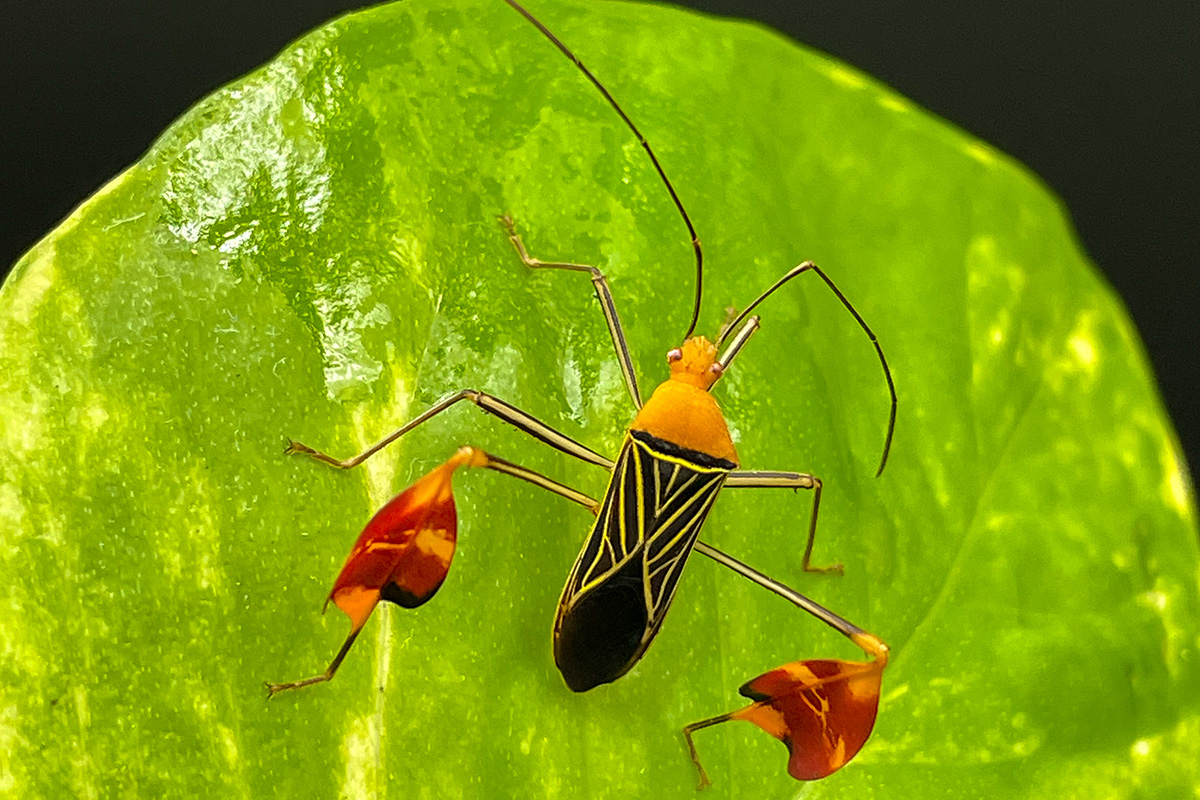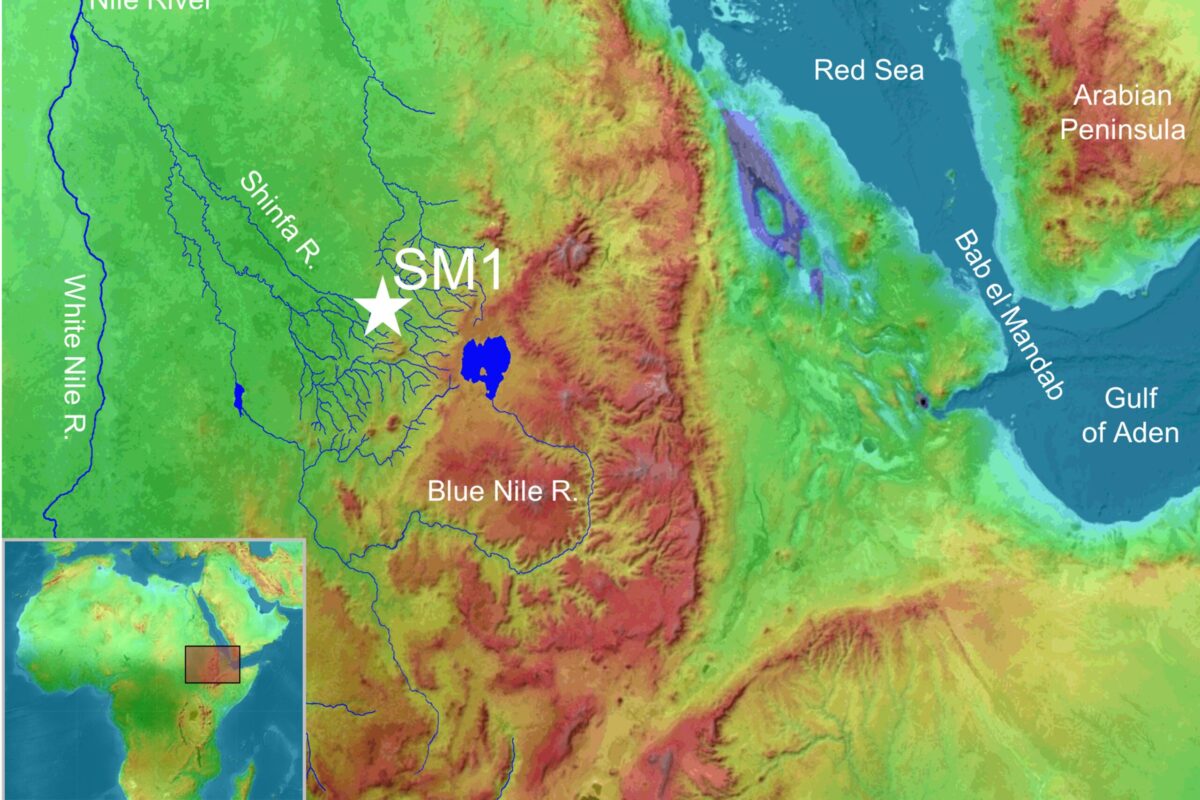UT Entomologists Collaborate on Insect-Inspired Album
An award-winning composer came to class and had scientists lend an ear, resulting in music that’s all the buzz.

A young treehopper photographed at the Brackenridge Field Laboratory pollinator garden is one of the insects that inspired a scientist-musician collaboration. Credit: Alex Wild
Imagine stepping out your front door and hearing the buzz of a fly, the fluttering of a bee’s wings or the hum of a mosquito. While most people may brush off such sounds as pesky background noise, composer Graham Reynolds detects the beauty in them.
The musician, whose scores have appeared in films from HBO and Richard Linklater, audited the course of University of Texas at Austin curator of entomology Alex Wild in 2019 to immerse himself in insect biology. With the insights he gained from the course, Reynolds, along with percussionist Susie Ibarra and cellist Jeffrey Ziegler, composed and created their new album, “Insectum.” It’s a modern composition, inspired by the world of arthropods.
Wild and Jo-anne Holley, a fellow UT entomologist and associate professor of practice, played a part in bringing the album to life. They offered feedback on initial pieces — songs with names like “A Meadow Wakes Up” and “Giant Snail Devours Earthworm.” Wild, a longtime insect photographer, also contributed photos of bugs, including one taken at the Brackenridge Field Laboratory, for the album cover and posters.
An entomological discussion followed by a public performance of the music will be held in KFMA Studios in Austin on Thursday, February 22.
As the composer sought input from them, Holley said she and Wild were there “to inspire and provide context as consultants” by sharing, for example, rhythmic sounds that insects make. But the scientists didn’t always agree on the right feedback. For example, Wild believed a “militaristic-sounding piece” inspired by army ants was too orderly and should be made more chaotic, while Holley thought the piece accurately reflected the nature of army ants.
“There are two real components to an army ant raid. There’s the initial exploration, which is really chaotic,” Holley said. “But if you take a step back, the ants can implement a lot of rigor by laying down pheromone trails, and then they all know what to do. So we’ve kind of both hit that topic from different perspectives.”
Wild believes that cross-disciplinary collaborations like this one let experts from different areas “open the eyes of others and have our own eyes opened,” while highlighting, too, important topics for the public. Many insects are currently threatened, he pointed out, but there are simple actions people can take to help them out, like avoiding turning on one’s porch lights at night or not raking all the leaves in one’s yard in order to provide habitats for bugs.
“A ton of insects fly at night, and for nearly the entirety of the existence of their species, night has been dark,” Wild said. “You put a porch light on and an insect going by will try to turn its back to that light and end up spiraling and getting caught.”
This isn’t Wild’s first artistic collaboration. He recently worked with an alum of UT’s College of Fine Arts on a piece featured near the entrance of the Texas Science and Natural History Museum.
“We are very eager to collaborate with artists of all kinds,” Wild said, adding that projects like “Insectum” could even help broaden people’s perspectives on insects, which are often depicted as the enemy. “These pieces put you into an insect’s world. I hope that sort of de-centers people from themselves for a little bit so that they can appreciate the trillions of other beings out there that are all doing their own thing in the world.”
For her part, Holley, too, emphasized that she would like to see the album point people to the everyday importance of insects. The services insects provide to ecosystems and economies are enormous, for example, but they often go overlooked.
“I just really hope that this makes insects a little bit more beautiful,” she said, “a little bit more respected.”



